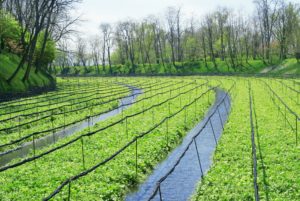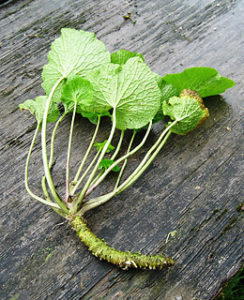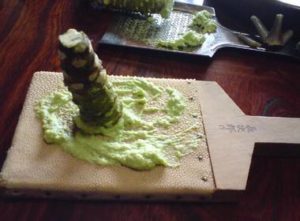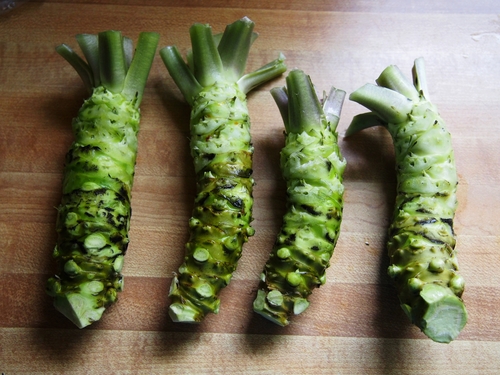When you hear the word wasabi, you probably think of the spicy green paste that’s on your plate at sushi restaurants. But guess what? That green stuff isn’t technically wasabi, it’s horseradish, a cousin of wasabi. So what is wasabi then?
What Is Wasabi?
Wasabi is a green root grown in Japan, mainly in Nagano, Shizukoa and Shimane Prefectures. It is used in food, mostly as a condiment or spice and is typically eaten fresh. Wasabi’s quality is based on its sweetness, aroma, adhesiveness (in paste form) and hot flavor. Most restaurants outside Japan use western horseradish (a white root with more pungent flavor) because Japanese wasabi is very expensive and hard to get.

Why is Wasabi So Hard to Get?
First of all, wasabi is very difficult to grow, as it needs a shaded area with cool flowing water, usually located between hills in special soil. Wasabi is also notoriously delicate, as the root is very susceptible to disease and the soil must constantly be tended to adjust drainage. Even 20-year wasabi farmers have reported crop failures.
Because of the associated farming difficulties, Japanese wasabi is very expensive. Quality wasabi at Tokyo’s Toyosu Market costs around 10,000 Yen per pound ($100 USD per 1 lb, or, 80 GBP per .5 kg). And this doesn’t even include costs associated with import/export. Because of the high cost, most wasabi you get outside Japan is western horseradish.

Other Little-Known Japanese Wasabi Facts
- In Japan, wasabi is not a common ingredient for sushi and sashimi
- The pungency of wasabi is lost over time and peaks within the first few minutes it is cut
- Due to its stickiness, wasabi helps toppings such as roe stay on top of the sushi rice
- Western horseradish originated in Europe
- Western horseradish has a smooth, white appearance and Japanese wasabi has a green bumpy appearance
- Green food coloring is added to western horseradish to give it its green color
- Western horseradish is called yama-wasabi and Japanese horseradish is called hon-wasabi


So now you know – the wasabi you’ve been eating all this time is actually its cousin, western horseradish. So next time you travel to Japan, check the grocery stores and markets for hon-wasabi and taste the difference for yourself!

Source: The Asahi Shimbun
![]()
Check Us Out!
- Facebook: @japanalytic
- Instagram: #japanalytic

